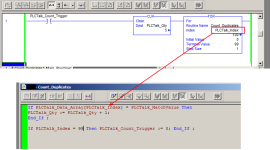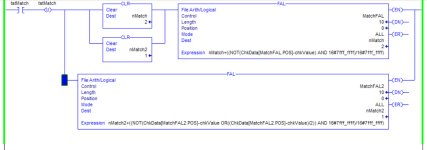Searching for values in an array
- Thread starter golftmd13
- Start date
Similar Topics
Good morning everyone,
I'm working on a project where I am recording data from a machine by sending it message packets. Most of the time the data...
Hi everybody. I'm working with RSLogix5000 and looking to create a database of part numbers and corresponding critical values. To use this...
is it just me, or has something happened with the google search when using chrome?
looks likes safari on mac is ok, but edge/chrome on windoze has...
Besides using BootP in the past, I am relatively new to having to look for privately addressed devices in many control networks. All of the...
Good morning, could anyone recommend a 24VDC pulse counter which counts up or down to a preset #? Once it reaches this number, send a 24VDC back...




